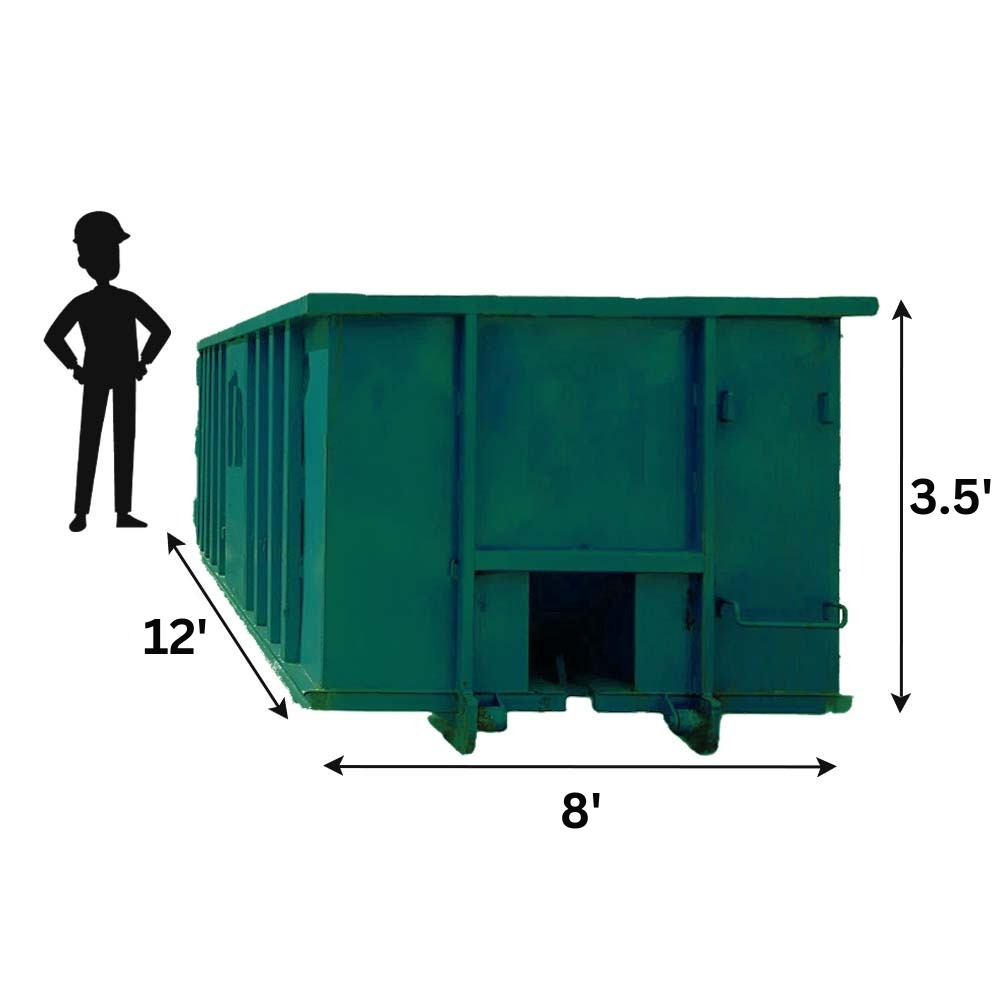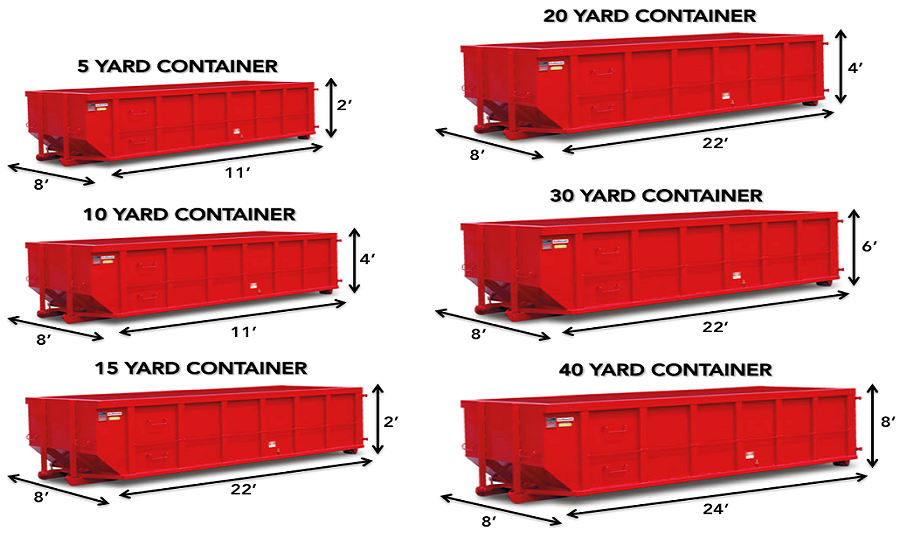Renting a dumpster can be a complicated procedure, however breaking it down into 10 manageable steps simplifies the task. Start by identifying your dumpster needs, taking into consideration factors like job size, type, and special demands. Next, inspect local regulations to guarantee compliance. After that, pick the right dumpster dimension and type, contrasting prices to discover the most effective offer. Set up shipment and prepare the location, making certain effective positioning and accessibility. Fill the dumpster strategically, and plan for prompt pickup By complying with these steps, you'll be fully equipped to navigate the dumpster rental process with confidence, and discover the specifics that will make your project a success.
Determine Your Dumpster Needs
Next, think about the dimension of the dumpster you'll need Usual dimensions range from 10 to 40 cubic yards, with bigger sizes normally made use of for massive building and construction or demolition projects.
Smaller sizes are much better suited for smaller jobs, such as home renovations or yard cleanups. You must likewise think of any type of unique demands, such as cooling agent healing or hazardous waste disposal
Check Neighborhood Regulations First
Before leasing a dumpster, it's vital to acquaint on your own with local regulations, as these can vary considerably from one region to one more. Recognizing regional rules and constraints can save you from potential fines, charges, and even dumpster removal.
Start by calling your local government or public jobs department to ask about particular regulations in your area.
Some common regulations to watch out for consist of permits, zoning laws, and noise restrictions You might require a permit to place a dumpster on public residential or commercial property, such as a road or sidewalk.
Zoning laws might dictate where and exactly how you can put a dumpster on your residential or commercial property. In addition, sound constraints may restrict the moments of day when dumpster distribution or pick-up can occur.
It's also essential to get in touch with your home owners' association (HOA) or property monitoring company, if relevant, as they might have their own guidelines and regulations regarding dumpster rental.
Choose the Right Dumpster Size
With your local policies in check, it's time to concentrate on selecting the best dumpster dimension for your task. This vital action assurances you have sufficient space to deal with waste efficiently and stay clear of unnecessary costs.
To establish the suitable dumpster size, consider the list below factors:
- Project scope: Quote the amount of waste you'll produce based on the job's size and type. For example, a little improvement might require a 10-15 yard dumpster, while a large building task might require a 30-40 yard dumpster. Debris type and weight: Various products have differing weights and quantities. For instance, heavy building and construction products like concrete and asphalt require more area than lighter materials like drywall and roofing shingles. Space constraints: Examine the available room at your project website for dumpster placement. Confirm the chosen dumpster dimension can fit comfortably in the assigned area, permitting easy gain access to and marginal disruptions.
Select the Ideal Dumpster Type
The task's details needs dictate the perfect dumpster type, which can substantially affect the effectiveness and cost-effectiveness of waste disposal
With numerous types available, recognizing the distinctions is important to making a notified decision.
Roll-off dumpsters, also referred to as open-top containers, are suitable for building and construction and demolition projects, allowing for simple loading and discharging of heavy materials.
Enclosed dumpsters, on the other hand, are much better matched for domestic and industrial tasks, providing a safe and tidy waste administration solution.
Compactor dumpsters are developed for high-volume waste generation, such as in restaurants and retail stores, and include an integrated compactor to make best use of storage capacity.
Yard dumpsters, additionally called bag-style dumpsters, are https://piedmonttriaddumpsters.com/ perfect for small jobs, like home restorations or backyard cleanups.
Compare Dumpster Rental Prices
Having selected the ideal dumpster kind, it's currently imperative to examine the expense variable, as it substantially influences the general job budget.

Comparing dumpster service rates is a considerable step in ensuring you obtain the best bargain for your project.
To get an exact quote, consider the following factors:

- ** Dumpster size and type **: The bigger the dumpster, the higher the rental cost. Additionally, specialty dumpsters, such as those for building or hazardous waste, might include a higher price tag. ** Rental duration **: The longer you lease the dumpster, the extra you'll pay. Make certain to select a rental period that aligns with your task timeline. ** Location and shipment fees **: Dumpster rental rates can vary relying on your place, and some companies may bill additional for distribution and pickup.
Schedule Your Dumpster Delivery
Several variables contribute to a seamless dumpster rental experience, and scheduling your dumpster delivery is just one of them. A well-coordinated distribution assurances that your project remains on track, and you can concentrate on the jobs at hand.
When scheduling your dumpster shipment, take into consideration the period of your task and the quantity of waste you anticipate to generate. This will aid you identify the ideal rental period and dumpster size.
Choose a delivery date and time that works best for you, taking into account any kind of neighborhood guidelines or limitations. Be prepared to offer the specific shipment area, including any kind of details directions or access requirements.
Ascertain that the shipment location is clear of obstacles, allowing the dumpster to be positioned securely and efficiently.
Remember to confirm the shipment details with your dumpster rental company, including the dumpster dimension, rental duration, and any additional solutions, such as dumpster placement or removal.
Prepare Your Dumpster Location
Once you've scheduled your dumpster shipment, it's time to transform your attention to preparing the location where the dumpster will be placed. This action is essential to ensure a smooth and problem-free rental experience.
To prepare your dumpster location, take into consideration the following:
- Clear the area: Eliminate any kind of particles, obstacles, or vehicles that may be in the method of the dumpster distribution. This will certainly guarantee the dumpster can be positioned safely and efficiently. Check for overhead clearance: Confirm that there are no low-hanging branches, high-voltage line, or various other obstructions that might interfere with the dumpster shipment or pickup. Designate a certain location: Choose a level, degree surface that is easily accessible for the delivery truck and has adequate space to fit the dumpster.
Fill Your Dumpster Efficiently
Now that your dumpster remains in location, it's time to begin loading it efficiently. To maximize your dumpster's capacity, begin by positioning the largest, heaviest items near the bottom. This will develop a stable base for the rest of your waste.
Next, fill in gaps with smaller items, such as cardboard boxes or loosened debris. This will help protect against thrown away area and assure you obtain the most out of your dumpster rental.
When adding bulkier things, like furniture or appliances, think about disassembling them to save area. You can additionally lay items like plywood or drywall level to make the most of your dumpster's surface area area.
Be mindful of the dumpster's weight capacity and prevent overwhelming it, as this can lead to additional fees and even security hazards.
Plan for Dumpster Pickup
With your dumpster efficiently filled, it's time to turn your attention to the logistics of its elimination. This vital step ensures a seamless experience and prevents any type of possible problems or delays.
To secure a smooth pick-up process, consider the following vital factors:
- Schedule in advance: Book your pickup at least 24-48 hours before the preferred removal date to assure accessibility and stay clear of added fees. Clear access: Confirm the dumpster is quickly obtainable and not obstructed by cars, trees, or other barriers that might prevent the pickup process. Compliance with regulations: Validate that your dumpster materials comply with neighborhood regulations and the rental agreement, as particular materials may need special delivery or disposal.